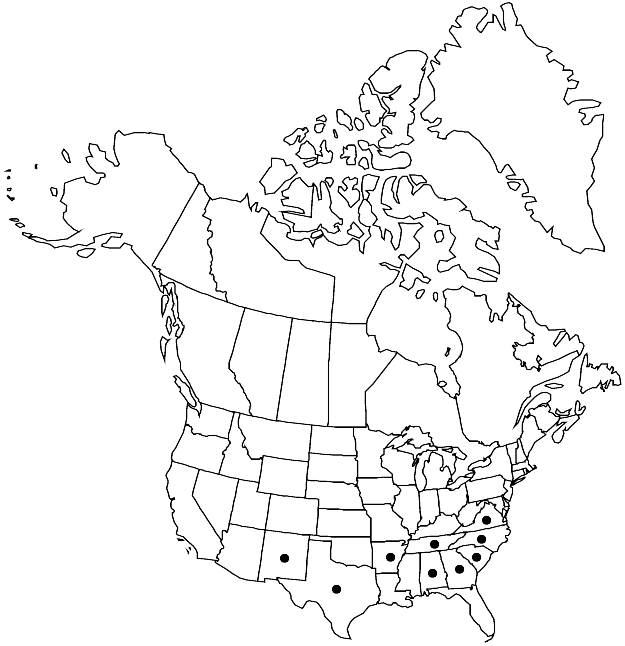Entodon sullivantii
Contr. Fl. Crypt. As., 233. 1873.
Plants in thin mats, green to yellow-green. Stems to 6 cm, subpinnate, branches terete-foliate, sometimes appearing somewhat complanate-foliate. Leaves erect, oblong-ovate, 1.8–2 mm; margins plane, entire proximally, serrulate distally; apex acute to gradually short-acuminate; ecostate or costa double, short; alar region ± abruptly differentiated, 1-stratose, not reaching costa. Sexual condition autoicous. Seta reddish, 1.4–1.7 cm. Capsule cylindric, 2–2.7 mm; annulus 3-seriate, persistent; operculum obliquely rostrate; exostome teeth brown, external surface cross striolate proximally, papillose to smooth apically, not perforate; endostome segments smooth to lightly roughened. Spores 10–13(–19) µm.
Habitat: Rock in moist hardwood forests
Elevation: low to moderate elevations
Distribution

Ala., Ark., Ga., N.Mex., N.C., S.C., Tenn., Tex., Va., Mexico (Michoacán), e Asia.
Discussion
Entodon sullivantii is one of the rarest species of the genus, and one of the few that most commonly grows on rock. The species is characterized by essentially terete-foliate branches (sometimes not overly obvious), reddish setae, cross striolate exostome teeth, and smooth endostome segments. The capsule is usually somewhat wrinkled when dry and empty.
Selected References
None.